Top speed 195 km/h Length 8.1 m Designer PZL Mielec | Wingspan 11 m Manufacturer PZL | |
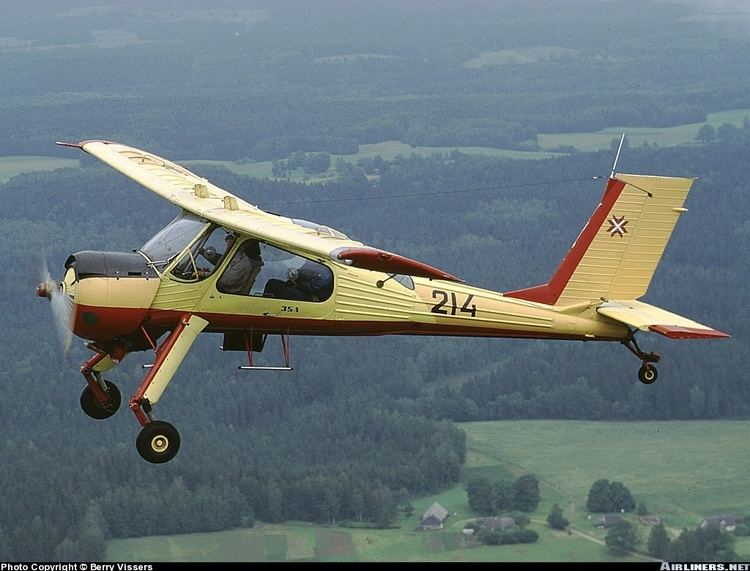 | ||
Pzl 104 wilga huge rc plane model
PZL-104 Wilga (golden oriole) is a Polish designed and built short-takeoff-and-landing (STOL) Civil Aviation utility aircraft manufactured by PZL "Warszawa-Okęcie". The Wilga has evolved through many ever-improving versions during its continuous production from 1962 to 2006, when the European Aeronautic Defence and Space Company (EADS) announced on their website the production of this aircraft would cease.
Contents
- Pzl 104 wilga huge rc plane model
- Pzl 104 wilga 35 taxiing takeoff and touch and gos csu3
- Design and development
- Description
- Variants
- Service
- Military operators
- Civilian operators
- Accidents and incidents
- Specifications Wilga 35A
- References
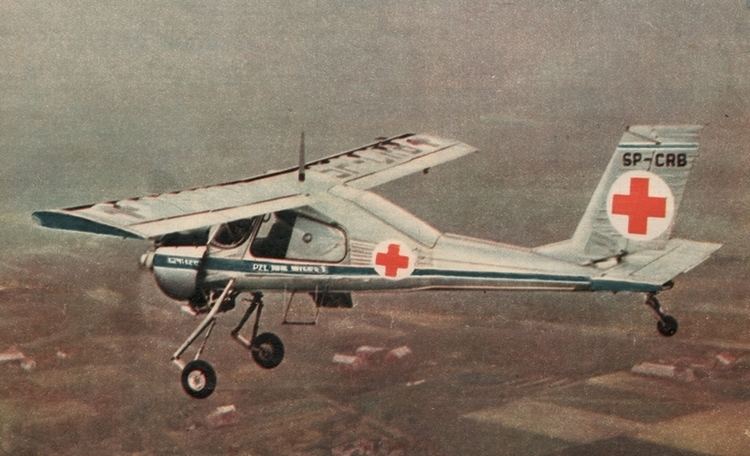
Pzl 104 wilga 35 taxiing takeoff and touch and gos csu3
Design and development
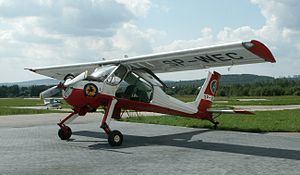
The PZL-104 was designed for robust use in sports, civil aviation, with a strong emphasis on glider-towing and parachute training. The prototype of the initial Wilga Mark 1 variant was first flown on 24 April 1962 powered by an existing Polish 220 hp (160 kW) horizontally-opposed engine the PZL WN-6RB. The Wilga 1 prototype exposed a number of design faults, the most serious of which was excessive weight and a rear view restriction such that the crew could not easily see a towed glider. This resulted in an airframe review that thoroughly redesigned the aircraft, led by Bronisław Żurakowski and Andrzej Frydrychewicz.
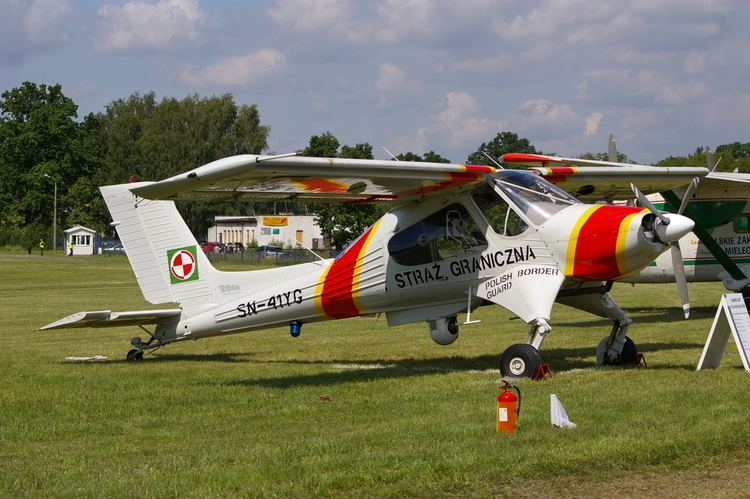
Retaining major structural elements and successful sub-assemblies from the wings in the initial design, a completely new slimmer, strengthened fuselage was added that also offered an excellent rear view aspect for the crew during glider towing operations, and the side doors were re-engineered to open upwards for better aero observation or parachute jump sorties. The upgraded aircraft could be flown with the doors open if required, and had an air ambulance conversion capability.
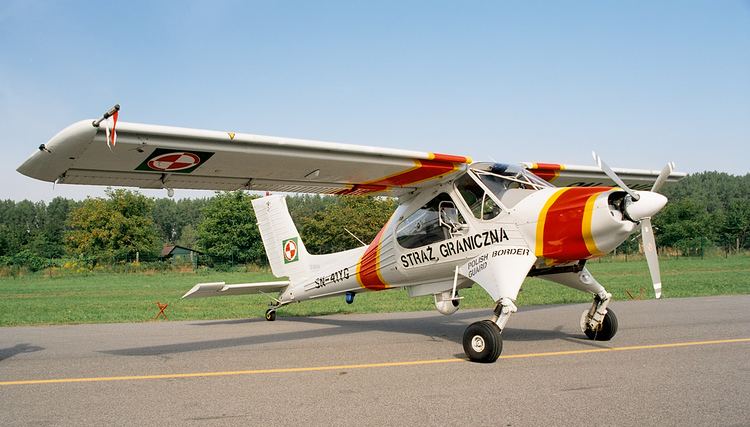
The new PZL-104 Wilga Mark 2 variant first flew on 1 August 1963, followed by a short production run which later was converted to the Wilga C and Wilga Mark 3 configurations. On 30 December 1963 the Wilga C (or Wilga Mark 2 Subvariant C) was flown, an export variant for Indonesia powered by the imported North American -certified 225 hp (168 kW) horizontally-opposed Continental O-470 engine. The Wilga 2 airframe had proved a successful design, but the WN-6RB engine was not fully developed and so did not enter serial production. As a result, it was decided to use an in-production radial engine, the 260 hp (190 kW) Ivchenko AI-14R; and this led to the PZL-104 Wilga Mark 3 variant, which first flew on 31 December 1965. The new engine was more powerful but it spoilt the previously clean and aerodynamic fuselage lines, originally designed for a flat engine; nonetheless, the new variant was successful. Due in combination to the power of the engine and the STOL capability of the airframe, an extraordinary high rate of climb of 11 m/s (2,165 fpm) (maximum) under minimal load was possible. One of a few remaining flaws was a relatively uneconomical engine.
The Wilga 32 was an improved small-series export variant with a Continental flat engine, produced also in Indonesia as the "Gelatik". After producing 13 Wilga 3s there were some improvements made, most notably a landing gear base increased from 2.12 to 2.83 m (7.0 to 9.3 ft) to improve stability. An improved model, designated PZL-104 Wilga 35, first flew on 29 June 1967, subsequently entering mass production. The most numerous variant of Wilga 35 was the utility plane Wilga 35A, others were built in small numbers or remained prototypes.
From 1979 the Wilga 80 went into production, an improved model certified for the US market. In the late 1990s the PZL-104MA Wilga 2000 family was developed with Lycoming flat engines and with improved aerodynamics.
Over 1,000 Wilgas of all types have been built, including 935 of the Wilga 35 and 80. This means more PZL-104 have been produced than any other Polish aircraft design.
A Canadian aircraft supplier considered building the Wilga aircraft for the Air Cadet league due to its complete compliance with glider training requirements, and the need for more aircraft, but were unable to get the necessary support of EADS to further produce the PZL-104MA Wilga 2000.
Description
With an all-aluminium construction, the Wilga is a high-wing cantilever STOL monoplane, with a conventional layout. The main cabin is constructed of duralumin, riveted and corrugated, increasing the strength and durability of the low-mass semi-monocoque fuselage. The rectangular single-spar wing is fitted with slotted flaps and anti-stall slats. The four-seat cabin is fitted with two large side doors, opening upwards to facilitate large loads, and rapid entry/exit. The main wheels are attached to an articulated, conventional fixed pneumatic shock landing gear with a heavy-duty sprung tail wheel and glider tow hook. The two-bladed composite wooden propeller is strengthened with bonded metal leading edges. The Russian-designed engine rotates in an opposite direction to North American standards. The newest models of Wilgas use full metal propellers and North American Continental O-470 engines with standard rotation. Likewise, presently two 195 L (43 imp gal; 52 US gal) fuel tanks are located in the wings.
Variants
Service
Wilgas are used in civil aviation for touring, observation, glider towing, parachute training and bush flying. In Poland, they form the backbone contingent of the Polish Aero Club where they are the basic aircraft used in flight training. Polish pilots flying Wilgas have won numerous prizes in the FAI World Rally Flying and Precision Flying Championships, from 1978 to 2006. In military service they are used as liaison, recovery and light observation platforms.
Military operators
Civilian operators
Accidents and incidents
Specifications (Wilga 35A)
Data from
General characteristics
Performance
